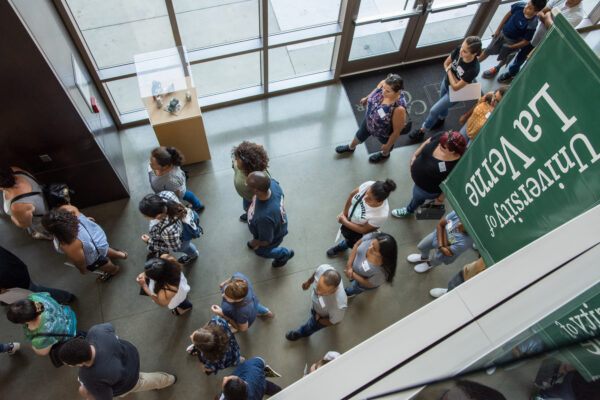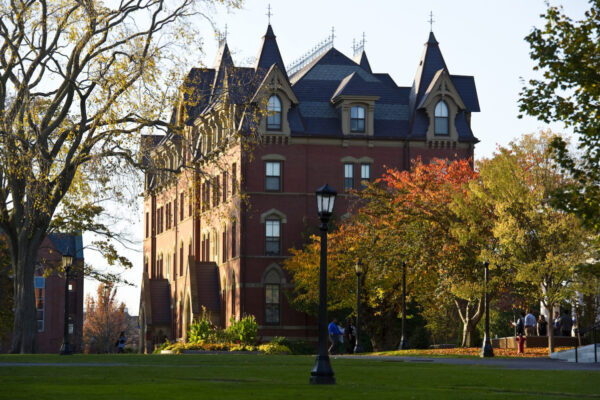This blog post is part of the American College President Study body of work generously supported by the TIAA Institute.
The 2022 release of Renaissance, Beyoncé’s seventh solo album, took the world by storm. In “Break My Soul,” Beyoncé’s lyrics, accompanied by Big Freedia’s call for us to “release,” express the need for releasing the way things have been done in all spheres of life. Within higher education, the true diversification of the college presidency can be a starting point for that change.
Despite a significant transformation in the demographics of the U.S. college-going population, the college presidency remains persistently White and male. As we seek to bring long-overdue inclusion to higher education, it’s time to reimagine the current pipeline to the presidency and eliminate the pitfalls historically marginalized people face. Truth is, it is time for a renaissance, specifically in succession planning.
Broadly speaking, succession planning charts an institution’s future by outlining a process to find new leaders, while also identifying, training, and mentoring promising internal candidates to assume greater leadership roles. Even more critically, it can also help reduce the racial and gender gaps among higher education leaders. Succession planning is essential for intentionally creating and sustaining leadership opportunities for people who have historically been excluded from higher education leadership.
The state of diversity in the American college presidency
“None of that maybe energy!” (“Energy” ft. Beam)
Since ACE’s inaugural American College President Study (ACPS) in 1986, the landscape of higher education has changed in unanticipated ways, including in more recent years as we continue living in an ongoing global pandemic and witnessing public and overt violence against Black, Indigenous, Asian and other communities of color.
Presidential appointments from June 2020 to November 2021 indicate that more leaders from historically marginalized racial groups were at the helm. For many, this represented hope that the American college presidency was finally changing its historical profile of White, male, 60+ years old leaders. For others, this change was welcomed but met with skepticism about whether the trend was temporary. This skepticism may also be grounded in the fact that, according to ACPS 2023, the average time presidents have been in their current positions has decreased from 8.5 years to 5.9 years over the past 15 years. When factoring in race and gender, non-White presidents have served in their current positions for about one year less than their White peers. This signals that on average, presidents are newer to their positions than they have been in previous surveys due to churn and turnover.
According to a 2022 Inside Higher Ed piece by Doug Lederman, from June 2020 through November 2021, more than 22 percent of the presidents appointed across historically White institutions were from historically marginalized racial groups. The overall percentage of women hired during the same period slightly declined from 35.3 percent to 34.8 percent. White women still held the lion’s share of all presidential appointments among women leaders at 62 percent, whereas women from historically marginalized racial groups made up 13 percent of the new hires during this time. Much credit for the increase in the appointment of leaders of color during this period can be attributed to the work of Historically Black Colleges and Universities (HBCUs). According to Lederman, when HBCUs are accounted for in the recent data, the figure of 22 percent of the presidents of color appointed between June 2020 and November 2021 increases to over 35 percent.
The American college presidency has changed since the first study in 1986. According to ACPS 2023, the average age of college presidents has been about 60 since 2006. Men still continue to outnumber women in the president by two to one. The number of presidents identifying as men in 2023 is 67 percent. When disaggregating for the intersections of race and gender, women of color account for 12 percent of current presidents and men of color account for 15 percent of all presidents (combined 27 percent).
These trends lead us to ask if the college presidency is evolving enough, and for whom. Some even might suggest that lots of “maybe energy” (i.e., lip service) has been paid, and that few institutions have created intentional plans for succession for leaders from historically marginalized groups and even less at the intersection of race and gender.
The state of succession planning
“If you don’t seek it, you won’t see it—that we all know!” (“Break My Soul” ft. Big Freedia)
Succession planning is one of many solutions for addressing not only the lack of diversity, but also the anticipated turnover in the college presidency. ACPS 2023 revealed that 55 percent of presidents planned to leave their current positions within the next 5 years, either retiring or looking for a new position. Only 22 percent of presidents reported their institutions have a temporary succession plan in place, and only 30 percent were preparing a successor. This lack of succession planning creates more opportunities for leadership vacancies to be filled through informal or underground processes, presenting its own challenges to equity. Succession plans don’t just happen—they require intentional design and implementation. If you don’t seek it, you won’t see it.
A successful succession plan balances logistics—the decision whether to appoint an interim leader, the readiness to select a search committee, the ability to hire a search firm, and so on—with an institution’s goals. To go a step further, an equity-focused succession plan also develops a stable of internal candidates that have both the potential to fill important leadership roles and the diversity of backgrounds to bring new ideas foreword.
However, succession planning seldom includes people at every rank within the institution. We’ve long thought of succession planning as only for positions in executive leadership. As a result, we’ve narrowly defined the players, action, and impact that equitable succession planning can have.
Now is the time to reshape the role of succession planning within the academy to focus on increasing diversity and advancing equity. But exactly how can we do that?
Recommendation 1: Focus on equity
Unique! (“Alien Superstar”)
Equity is central to any successful succession plan. People from historically marginalized identities should be intentionally included in leading and participating in succession planning. Additionally, sponsors, hiring managers, and other decision-makers involved in the planning process can be powerful allies to this group—saying their names and identifying their skills in rooms where they may not be. Surfacing diverse talent requires institutions and leaders alike to be aware of the unique skill sets and experiences that leaders from historically marginalized identities bring to institutions.
Creating goals for equity within a succession plan is also essential. For example, does the succession plan ask about the race and gender identity of potential leaders? Are people from historically marginalized identities named as prospective leaders at every level? Some institutions and boards of trustees engage in informal or underground succession planning in their professional networks. Having an expanded network of colleagues to tap is a good thing. However, too much of a good thing can also cause harm. This practice of solely tapping into one’s network creates a very limited and often racially homogeneous pool of candidates.
Transparency is a word frequently thrown around in higher education; however, engaging in transparency is incredibly hard work. In much of the work I have done highlighting the experiences of women of color in the pipeline for the presidency, their ask remains the same—for transparency. In an upcoming interview brief I prepared on women of color leaders who were semifinalists or finalists for presidential roles, the participants cited institutions and search agencies including them to fill a quota for diversity candidates but not fully considering their candidacy. This situation often included women of color leaders who had already served in an interim presidency role or had engaged in presidential tasks at the institution they were applying to lead. It is incumbent on leadership to be clear about what they are looking for in candidates (skill sets, experiences, education, or other credentials) and ensure that those requirements do not implicitly or explicitly exclude people from historically marginalized identities.
Recommendation 2: Reflect current priorities
“Move out the way!” (“Move” ft. Grace Jones & Tems)
Institutions may be standing in their own way if they think of succession plans as separate from their policy reviews and strategic plan. Higher education is perfectly primed to move out the way and try something new in support of the people who make our institutions work. One way of doing so is through congruence in succession planning, policy, and strategic planning goals—this trifecta will create an environment in which equity thrives.
Institutions also should consider concise timelines for reviewing and amending succession plans to ensure institutional goals remain the focus. I would recommend reviewing on an annual or bi-annual timeline. One example of an institution that uses regularly reviews and innovates their institutional succession plan is the University of South Carolina. Their three-step plan allows for regular re-imagination, identification, and evaluation of talent in the pipeline to leadership, and requires leaders to identify critical positions and prospective candidates. Positions are also ranked within the plan according to the urgency and vitality of the role.
Recommendation 3: Foster staff development and leadership
“Check my technique!” (“Pure/Honey”)
A succession plan is an opportunity to intentionally grow from within rather than recruit from outside the institution, particularly when used for non-CEO positions. Long before we get to the role of the president, institutions should have identified a diverse pool of existing leaders with multiple high-level skill sets. An institution is well served by identifying growth opportunities and staff with specialized skills that can help institutions implement innovative initiative. Simply stated, institutions’ lack of technique causes them to overlook talented personnel that are ready to solve complex institutional issues.
When we begin to think of development as only something for executive leadership, we obstruct opportunities for institutional growth. In this more inclusive approach to succession planning, all staff are given access and encouraged to participate in professional development, which leads to a better-skilled institution.
Institutions can also develop staff at every level through rotational leadership or rotational training for people of color and women. Rotational leadership is an intentional exposure to various types of skills thus making leaders well versed in a myriad of need talents to run an institution. These opportunities are particularly important for women ascending into institutional leadership, whose fiscal expertise may be called into question.
Lastly, as part of succession planning, institutions should identify leaders who can serve as guides for people in the pipeline—with opportunities for mentorship at every level. I certainly have worked at institutions where the people I was able to learn with and from served as my greatest retention tool.
Conclusion
“I’ll justify love” (“Break My Soul” ft. Big Freedia)
Succession planning is one way that institutions can reimagine and create more equity within higher education. As 55 percent of the presidents in higher education prepare to transition or retire, we must consider ways to intentionally include people of historically marginalized identities in the pools from which we draw new leaders. In the words of Beyoncé, it’s time to justify love— to consider the ways that equity employs an ethic of love in service to students, faculty, staff and the mission alike. Justifying love may require us to move out of our own way and to employ a different approach from what we’ve done in the past. It is time for us to lean into the call for a renaissance to increase higher education trust and ensure the future of our institutions.
If you have any questions or comments about this blog post, please contact us.



